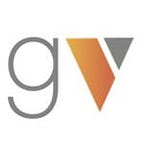From Biology Labs to Computer Science Labs: How I Switched Career Paths
By: Elaine Park, Associate Software Engineer
In March 2016, I called my sister while walking back from an organic chemistry lab during my freshman year of college. Plopping down in front of the music building, I told her my issue: I didn’t like my organic chemistry and general biology classes, but I was really enjoying the introductory computer science I was taking. I’d never been exposed to programming before this class.
But the idea of switching majors seemed impossible; I had spent my entire high school career building my bio resume, from shadowing doctors in the operating room to lab internships at CSU Channel Islands. My high school Medical Technology and Physiology teacher had even told other people, This is a girl who’s going to work at the CDC someday. On the other hand, the realm of software seemed completely foreign to me. While I enjoyed doing my problem sets and learning the logic behind programming, the day-to-day jargon like “big data”, “ssh into the virtual machine” and “back-end development” completely went over my head.
But my sister encouraged me. “Why don’t you just give it a shot?”
Two years later, I found myself in the RSF fieldhouse at a UC Berkeley career fair, wearing smart casual clothing, clutching a 2-pocket folder full of resumes and seeking an internship opportunity for the fall. At that point, I had successfully met the prerequisite requirements to declare the computer science major and was on track to graduate, yet the same doubts from my freshman year went through my mind. I didn’t even know what an internship would involve; I had simply been advised by more knowledgeable friends to try and find one for the experience. It was hard not to feel nervous while waiting in line to speak with a recruiter when the person who was right in front of me always seemed to be a freshman in a suit who had just sold off his fourth tech startup and learned Java before he learned English.
That was until I saw one of the post-graduate mentors for my Christian fellowship recruiting for his company at the fair. I had never heard of Veeva Systems, but after some research, I felt intrigued. Software for the life sciences? It seemed like the perfect intersection of my two undergraduate pursuits. So I decided to take the plunge and apply to Veeva. Throughout the interview process, I tried to make one thing clear: though I may not have had the same amount of experience that other people had, I really wanted to find a place where I could learn.
As an intern at Veeva, I got that chance to learn. From my code buddy to my direct manager, from my EDP manager to QA engineers and from architects to PMs, I never found a lack of people who were more than willing to answer my questions and from whom I could learn from. Even stepping foot into the office, filled with cubes with see-through walls and ergonomic stools for cubicle guests to sit on, I felt that the physical layout of the office invited collaboration and open communication. Some of the interns and I joked about how we spent more on the stools in other people’s cubicles than at our own desks some days.
During my internship, I also got to spend time with the other new hires. While we had no lack of fun EDP-sponsored events such as go-kart racing and bowling, my favorite memories were the times we made trips to Meadowlark Dairy for ice cream or played foosball in the game room. I got to connect with people who genuinely enjoyed their work and one another’s company, something that people had warned me might be difficult to find.
So by the time the end of my internship rolled around and I received a return offer, it never really crossed my mind to look for another place to work. I realized what matters more in the end than chasing the biggest brand name company or the highest-paying position (though Veeva doesn’t fall short in either category) is finding an environment where people support one another and where genuine relationships can be made.
